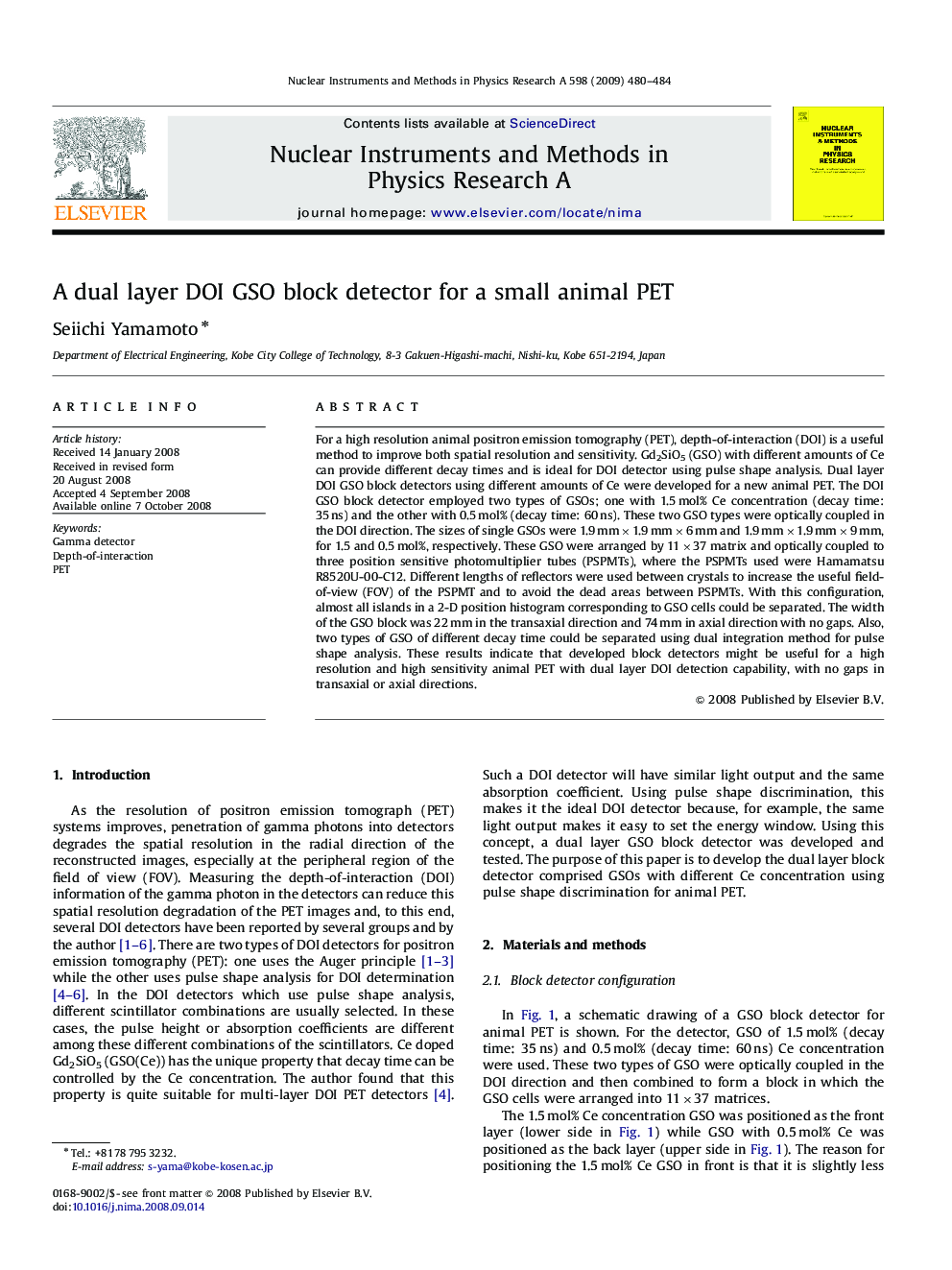| Article ID | Journal | Published Year | Pages | File Type |
|---|---|---|---|---|
| 1828793 | Nuclear Instruments and Methods in Physics Research Section A: Accelerators, Spectrometers, Detectors and Associated Equipment | 2009 | 5 Pages |
For a high resolution animal positron emission tomography (PET), depth-of-interaction (DOI) is a useful method to improve both spatial resolution and sensitivity. Gd2SiO5 (GSO) with different amounts of Ce can provide different decay times and is ideal for DOI detector using pulse shape analysis. Dual layer DOI GSO block detectors using different amounts of Ce were developed for a new animal PET. The DOI GSO block detector employed two types of GSOs; one with 1.5 mol% Ce concentration (decay time: 35 ns) and the other with 0.5 mol% (decay time: 60 ns). These two GSO types were optically coupled in the DOI direction. The sizes of single GSOs were 1.9 mm×1.9 mm×6 mm and 1.9 mm×1.9 mm×9 mm, for 1.5 and 0.5 mol%, respectively. These GSO were arranged by 11×37 matrix and optically coupled to three position sensitive photomultiplier tubes (PSPMTs), where the PSPMTs used were Hamamatsu R8520U-00-C12. Different lengths of reflectors were used between crystals to increase the useful field-of-view (FOV) of the PSPMT and to avoid the dead areas between PSPMTs. With this configuration, almost all islands in a 2-D position histogram corresponding to GSO cells could be separated. The width of the GSO block was 22 mm in the transaxial direction and 74 mm in axial direction with no gaps. Also, two types of GSO of different decay time could be separated using dual integration method for pulse shape analysis. These results indicate that developed block detectors might be useful for a high resolution and high sensitivity animal PET with dual layer DOI detection capability, with no gaps in transaxial or axial directions.
